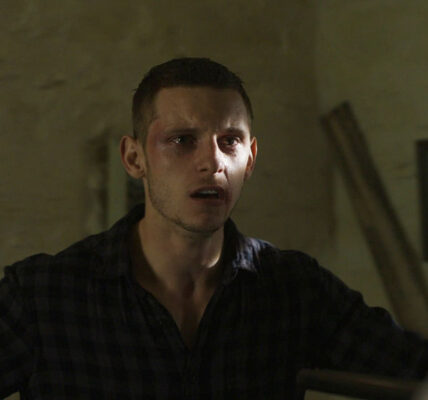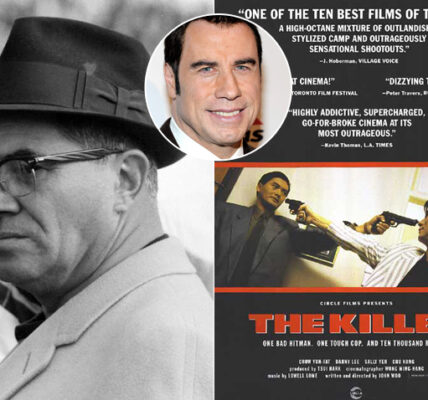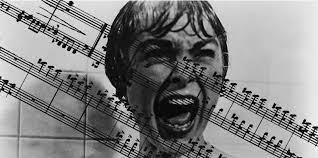The process of working on any film always starts with a conversation. In the case of Seven Psychopaths, initial meetings were held with director Martin McDonagh to ascertain the vision of the film, and how Method Studios could fit in the creative process. This swiftly moved on to conversations with production, producers and line producers, and the script was read and broken down to account for potential VFX needs.

Drew Jones, VP of Feature FX at Method Studios, London.
The VFX needs of Seven Psychopaths involved us working on a total of 87 VFX shots over five months. Having a Method Studios in Los Angeles was a huge advantage, as it allowed us to link the shoot component with the team based at the London facility. VFX supervisor Rob Hodgson was based in LA; he liaised with production and the DP during the shoot and was able to assist with on-set questions and needs as they arose. This both aided the production with their shoot needs and helped the London team in creating the VFX for the movie.
In general, the VFX were of the ‘real-world’ order and, for the most part, were enhancements and invisible effects, which can be a challenge in themselves. Beyond those there were also some set-pieces, where the challenge was to deliver a believable sequence that was also more dramatic—and sometimes slightly more humorous—than real life. This included two throat-slitting shots, one of which was computer-generated to enable the VFX team to create exactly the look visualised by Martin. The action of the knife against the skin, effect of the pressure from the blade and the amount of blood released were all created digitally, so it was possible to adjust the action according to taste. The blood sprays especially had to really engage the audience without appearing over the top. It took elements of concept and FX development to achieve the correct balance to make the audience react while remaining firmly inside the story.
When it came to post, we carried on working extremely closely with Martin as we continued to create and refine the VFX shots. He was located on the floor below us at our Soho offices, at sister company Deluxe 143, so it was easy for him to liaise with the team. That Company3, who were producing the DI, are also located in the same building allowed for an extremely efficient process of communication, and the whole process was very collaborative.
Having worked on studio films like Wrath of the Titans and Harry Potter, as well as smaller films like Seven Psychopaths, I can say that, whatever their VFX requirements, all films require flexibility on the part of the company involved. The larger tent-pole projects are huge machines driving forth with sometimes 1,000-plus visual effects shots needing to be tended, so usually follow a very defined, disciplined path from start to delivery. Tasks and teams of VFX artists are managed accordingly.
In some ways the smaller films require a similar approach, but on a lesser scale. Sometimes greater flexibility and clever management is required, given that budgets will be very different. They will often test the creative aspirations of the VFX team, who may need to come up with obscure ways to achieve end results in accordance with available budgetary resource. The final VFX results for both types of films are always satisfying, for the same reasons that watching big VFX-driven movies and smaller independent films provide a very different storytelling route.
It’s true that the increasing prevalence of 3D has changed the role of VFX somewhat. 3D can take two routes: either shooting native 3D Stereo or post converting. The role of the VFX artist remains the same in terms of their disciplines, but this third dimension does add a level of complexity that requires technology and additional skills during the post process to ensure that the stereo effect is used to its best advantage. Not all of this process is left to post, but is a collaborative process with the main visual effects supervisor and any specialist stereo crew brought in for the production.
I think it is natural for anyone involved on the technical side of filmmaking to keep up-to-date with new advances. There are various seminars around the world showcasing new technology, and we will often have companies coming in to show new software. With the help of our technology experts we evaluate all that is on the market to ensure that we are keeping abreast of advances. Of course, all new systems require training, and this really is mainly ‘on the job’ where possible depending on the software or systems we are looking at employing. There are not normally huge changes, and so picking up new technologies becomes a natural talent for the VFX artists.
Our ability to adapt to changing technologies is undoubtedly one of the reasons why so much of the global industry’s effects work is being done from London-based studios like Method, and the UK really does have phenomenal creative and technical talent across all aspects of film production. The concentration of this talent in Soho provides an environment not really seen anywhere else in the world. Productions can bring large volumes of very high-end visual effects work into a location where they can easily walk from one facility to another, and also have that knowledge that they will be dealing with top artists from around the globe.
In order to support the UK’s creative industries, we need to continue being competitive in an already competitive global marketplace. Projects are driven by creative needs but the financial bottom line is crucial for production budgets, where studios feel they will get the best return on their money. We need to continue with healthy tax breaks to entice the main productions and to continue investing in training for artists and graduates so that the system can be fed with the very best artists.
Having been in the industry for over 15 years, it’s clear that it’s driven by new talent and new technologies. I think the images speak for themselves; the change in terms of what is now possible is incredible, even over that relatively short time frame. The basic techniques follow similar paths, but the tools now allow that path to go wherever you want it to. Technology takes us forward time and again, and VFX can now take the viewer on a journey to places they can only imagine. I believe, however, that there is absolutely no replacement for a strong script, story and cast; the combination of these, together with amazing visual effects, is extremely potent! •










